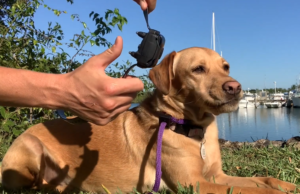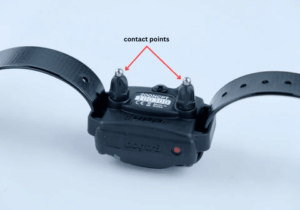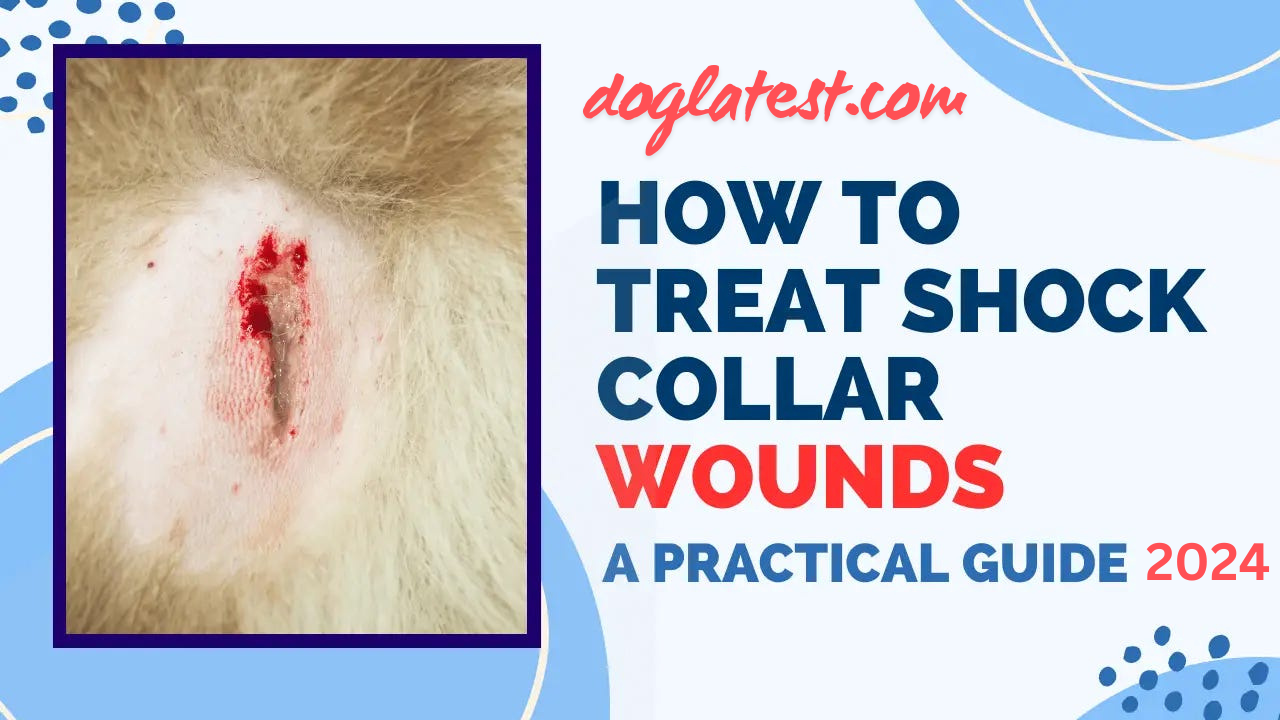Introduction
Shock collars, also known as electronic collars, are commonly used training tools for dogs. However, improper use can lead to wounds that need immediate attention. Addressing these wounds promptly is crucial to prevent infection and ensure your dog’s well-being. This guide will walk you through the steps on how to treat shock collar wounds effectively and safely.
Understanding Shock Collar Wounds:

What Are Shock Collar Wounds?
Shock collar wounds are injuries caused by the contact points of a shock collar. These wounds can range from mild irritation to severe burns, depending on the duration and intensity of the collar’s use.
Causes of Shock Collar Wounds
Wounds from shock collars often result from prolonged use, improper fit, or excessive intensity. Continuous friction and pressure can break the skin, leading to wounds that require care.
Read More: Shock Collar for Biting Puppy
Identifying Shock Collar Wounds
Signs and Symptoms
Look for redness, swelling, and sores where the collar contacts your dog’s skin. In severe cases, there might be bleeding, discharge, or signs of infection such as foul odor and pus.
Stages of Wound Severity
- Mild: Redness and slight swelling without broken skin.
- Moderate: Open sores or scabs with noticeable discomfort.
- Severe: Deep wounds, bleeding, and signs of infection.
Immediate Steps to Take
Removing the Collar
As soon as you notice a wound, remove the shock collar immediately to prevent further injury.
Cleaning the Wound
Use mild soap and lukewarm water to gently clean the afflicted area. Steer clear of harsh chemicals that can cause more skin irritation. Pat the area dry with a clean towel.
How to Treat Shock Collar Wounds
Applying Antiseptic
Apply a pet-safe antiseptic solution to prevent infection. Products like chlorhexidine or povidone-iodine are effective and safe for pets.
Using Natural Remedies
Natural remedies like aloe vera gel, coconut oil, or diluted tea tree oil can soothe the skin and promote healing. Apply these remedies gently and sparingly.
When to Seek Veterinary Care
Signs of Infection
If you notice signs of infection such as increased redness, swelling, heat, or discharge, it’s time to consult your veterinarian. Infections can spread rapidly and cause serious health issues.
Chronic Wounds and Complications
Wounds that do not heal within a week or show signs of worsening require professional attention. Chronic wounds can lead to more severe complications if left untreated.
Preventing Shock Collar Wounds

Proper Collar Fit and Placement
Ensure the shock collar fits snugly but not too tightly. Your dog’s collar and neck should be able to accommodate two fingers each. Place the collar high on the neck, away from the shoulder blades.
Regular Inspection and Maintenance
Check the collar and your dog’s neck regularly for signs of irritation or wear. Clean the collar according to the manufacturer’s instructions to prevent the buildup of dirt and bacteria.
Alternatives to Shock Collars
Positive Reinforcement Techniques
Training methods that use positive reinforcement, such as treats and praise, are effective and eliminate the risk of physical injury.
Other Training Tools and Methods
Consider using harnesses, head collars, or clicker training as safer alternatives to shock collars. These methods focus on guiding and rewarding good behavior without causing harm.
Case Studies: Successful Healing Stories
Real-Life Examples
One pet owner, Sarah, noticed sores on her dog’s neck from a shock collar. By removing the collar, cleaning the wounds, and switching to positive reinforcement training, she saw a remarkable improvement in her dog’s behavior and health within weeks.
Lessons Learned
These success stories highlight the importance of early detection, proper wound care, and considering alternative training methods to ensure the well-being of your pet.
Expert Opinions on Shock Collar Use
Veterinarian Insights
Veterinarians emphasize the importance of using shock collars responsibly and recommend regular checks to prevent injury. Many advocate for positive reinforcement methods as a first line of training.
Professional Dog Trainer Perspectives
Dog trainers often caution against the overuse of shock collars and stress the importance of proper training techniques. They recommend using shock collars only under professional guidance.
Ethical Considerations
Balancing Training Needs With Animal Welfare
While training is essential, it should never compromise the animal’s well-being. Humane treatment and ethical considerations should always come first.
Humane Use of Training Tools
If you choose to use a shock collar, ensure it is used humanely, with the lowest effective setting and under guidance. Always prioritize your dog’s comfort and safety.
Read More: 300M Remote Dog Training Collar
Maintenance and Care of Shock Collars
Regular Checks and Cleaning
Examine the collar frequently for indications of wear or injury. Clean it to remove dirt and bacteria, ensuring it remains safe and effective.
Ensuring Safe and Effective Use
Follow the manufacturer’s instructions for use and maintenance. Regularly replace batteries and check the contact points for any signs of wear.
Support and Resources for Pet Owners
Online Communities and Forums
Join online communities and forums where pet owners share experiences and advice on training and wound care. These platforms can provide valuable support and information.
Professional Help and Guidance
Consult with professional trainers and veterinarians for personalized advice and support. They can offer tailored solutions to your training challenges.
Conclusion
Shock collar wounds can be a serious issue, but with prompt and proper care, your dog can recover quickly. By understanding how to treat these wounds, preventing them through proper use, and considering alternative training methods, you can ensure your dog’s health and happiness. Remember, the key to successful training is combining effective techniques with a deep commitment to your pet’s well-being.
FAQs
What are the signs of shock collar wounds?
Signs include redness, swelling, sores, bleeding, and signs of infection such as discharge and foul odor.
How often should I inspect my dog’s collar?
Inspect the collar and your dog’s neck at least once a week, or more frequently if your dog has sensitive skin.
Can shock collar wounds lead to long-term damage?
If left untreated, shock collar wounds can lead to serious infections and long-term damage. Prompt treatment is essential.
What are the best alternatives to shock collars?
Positive reinforcement, clicker training, harnesses, and head collars are effective and safer alternatives.
How can I ensure my dog’s safety while using a shock collar?
Ensure the collar fits properly, use the lowest effective setting, and regularly inspect your dog’s neck. Combine with positive reinforcement for best results.

